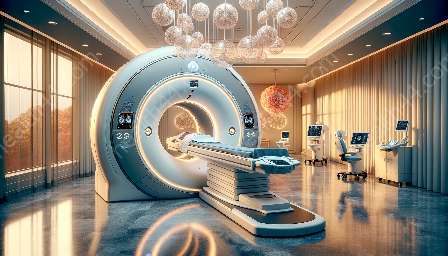As technology continues to advance in the field of healthcare, radiation therapy equipment has become integral in treating a wide range of medical conditions. In this comprehensive guide, we will explore the technology, use, benefits, and innovation of radiation therapy equipment and its compatibility with medical imaging devices. We will also delve into the role of such equipment in the broader context of medical devices and equipment.
Understanding Radiation Therapy Equipment
Radiation therapy equipment, also known as radiotherapy equipment, is used to deliver targeted radiation to specific areas of the body to treat cancer and other medical conditions. It plays a critical role in oncology and is a vital component of many cancer treatment regimens.
This advanced technology is designed to precisely target tumor cells while minimizing exposure to surrounding healthy tissue. It can be used as a standalone treatment or in conjunction with other therapies such as surgery and chemotherapy. Radiation therapy equipment is available in various forms, including linear accelerators, brachytherapy devices, and proton therapy systems.
Types of Radiation Therapy Equipment
1. Linear Accelerators: These machines deliver high-energy X-rays or electrons to the tumor while minimizing radiation exposure to nearby healthy tissue. They are widely used in external beam radiation therapy.
2. Brachytherapy Devices: These devices involve placing radioactive sources directly into or near the tumor, delivering high doses of radiation to the target area while sparing surrounding healthy tissues.
3. Proton Therapy Systems: Proton therapy utilizes a beam of protons to precisely target tumors, offering the potential for improved treatment outcomes and reduced side effects.
Integration with Medical Imaging Devices
Radiation therapy equipment is closely integrated with medical imaging devices to ensure precise targeting of tumors and accurate delivery of radiation. Medical imaging plays a crucial role in treatment planning, target delineation, and patient positioning for radiation therapy.
Advanced imaging modalities such as CT, MRI, and PET scans are used to visualize the tumor and surrounding anatomy, allowing radiation oncologists to develop treatment plans tailored to the specific characteristics of each patient's cancer. Imaging technologies also enable real-time visualization of the tumor during radiation delivery, ensuring that the radiation beam is accurately directed to the intended target.
Benefits of Integration
The seamless integration of radiation therapy equipment with medical imaging devices offers several key benefits:
- Precision: By leveraging advanced imaging techniques, radiation therapy can be precisely guided to the tumor while sparing healthy tissues, resulting in improved treatment outcomes and reduced side effects.
- Personalization: Each patient's treatment plan can be customized based on the unique characteristics of their cancer, leading to more effective and targeted therapy.
- Optimization: Imaging devices help optimize treatment delivery by providing real-time feedback and ensuring accurate positioning of the patient during radiation therapy sessions.
Radiation Therapy Equipment in the Context of Medical Devices and Equipment
Within the broader landscape of medical devices and equipment, radiation therapy equipment plays a critical role in advancing the delivery of healthcare and improving patient outcomes.
Its compatibility with medical imaging devices represents a synergy of advanced technologies that are revolutionizing the field of oncology and raising the standard of care for cancer patients. As technology continues to evolve, rapid advancements in radiation therapy equipment and medical imaging devices are driving innovation and enhancing the efficacy of cancer treatments.
Technological Innovation
Radiation therapy equipment is undergoing continuous innovation, with enhancements in treatment delivery, image guidance, and patient positioning. The integration of advanced software and hardware technologies is further optimizing the precision and effectiveness of radiation therapy, ultimately improving patient outcomes and quality of life.
Collaborative Approach
The compatibility of radiation therapy equipment with medical imaging devices fosters a collaborative approach to patient care, bringing together the expertise of radiation oncologists, medical physicists, radiation therapists, and radiologists. This interdisciplinary collaboration ensures that patients receive comprehensive, integrated care that is tailored to their individual needs.
Patient-Centric Care
By combining the capabilities of radiation therapy equipment and medical imaging devices, healthcare providers can offer patient-centric care that prioritizes safety, efficacy, and personalized treatment. This patient-centered approach emphasizes the importance of delivering precise, targeted therapy while minimizing the impact on healthy tissues and organs.
Conclusion
Radiation therapy equipment plays a vital role in modern oncology, offering advanced treatment options for cancer patients. The seamless integration of this equipment with medical imaging devices exemplifies the synergy of innovative technologies in driving improvements in patient care and treatment outcomes. As the field continues to evolve, the ongoing collaboration between radiation oncology and medical imaging is poised to shape the future of cancer treatment and contribute to the advancement of medical devices and equipment.


